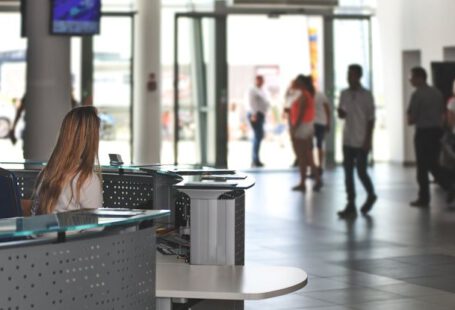In recent years, the energy industry has witnessed a remarkable shift towards embracing green technology as a means to mitigate the environmental impact of traditional energy sources. This shift is driven by the urgent need to address climate change and promote sustainability. Green technology, also known as clean technology, encompasses a wide range of innovations and practices aimed at reducing carbon emissions, increasing energy efficiency, and harnessing renewable energy sources. From solar panels to wind turbines, energy storage systems to smart grids, the influence of green technology on the energy industry is substantial and continuing to grow.
The Rise of Renewable Energy Sources
One of the most significant impacts of green technology on the energy industry is the rise of renewable energy sources. Solar, wind, hydropower, and geothermal energy are increasingly becoming mainstream sources of electricity generation, displacing fossil fuels such as coal, oil, and natural gas. The declining costs of renewable energy technologies, coupled with government incentives and growing public awareness of climate change, have accelerated the adoption of clean energy solutions around the world.
Renewable energy sources offer numerous advantages over traditional fossil fuels. They produce significantly lower greenhouse gas emissions, helping to combat climate change and reduce air pollution. Moreover, renewable energy is inexhaustible and abundant, making it a sustainable and reliable source of power for the future. As the demand for clean energy continues to rise, the energy industry is increasingly investing in renewable energy projects and integrating them into the grid.
Energy Storage and Smart Grids
Green technology is also driving innovation in energy storage and smart grid technologies. Energy storage systems, such as batteries and pumped hydro storage, play a crucial role in enabling the integration of intermittent renewable energy sources like solar and wind power into the grid. By storing excess energy when production exceeds demand and releasing it when needed, energy storage systems help balance the grid, improve reliability, and reduce the need for backup fossil fuel power plants.
Smart grids, on the other hand, leverage digital technology to optimize energy distribution and consumption in real-time. By integrating advanced sensors, communications, and control systems, smart grids enable more efficient and resilient energy networks. They allow utilities to better manage energy flow, detect and respond to outages faster, and empower consumers to monitor and adjust their energy usage. As a result, smart grids are revolutionizing the way energy is produced, distributed, and consumed, paving the way for a more sustainable and intelligent energy system.
Energy Efficiency and Building Design
Green technology is also influencing the energy industry through innovations in energy efficiency and building design. Buildings account for a significant portion of global energy consumption and carbon emissions, making them a key target for greening efforts. Energy-efficient building design incorporates features such as high-performance insulation, LED lighting, energy-efficient appliances, and smart thermostats to minimize energy waste and reduce utility costs.
Moreover, green buildings often incorporate renewable energy systems like solar panels and geothermal heat pumps to further reduce their environmental impact. Green building certifications, such as LEED (Leadership in Energy and Environmental Design) and BREEAM (Building Research Establishment Environmental Assessment Method), have become increasingly popular as a way to recognize and promote sustainable building practices. By embracing energy-efficient design principles and green building technologies, the energy industry is driving a shift towards more sustainable and environmentally friendly buildings.
The Future of Green Technology in the Energy Industry
As the global demand for energy continues to rise, the role of green technology in shaping the future of the energy industry will only become more significant. With advancements in renewable energy, energy storage, smart grid technologies, and energy-efficient building design, green technology is driving a transition towards a cleaner, more sustainable energy system. Governments, businesses, and consumers are increasingly recognizing the benefits of green technology and are investing in clean energy solutions to secure a more resilient and environmentally friendly energy future.
In conclusion, the influence of green technology on the energy industry is profound and far-reaching. From renewable energy sources to energy storage systems, smart grids to energy-efficient buildings, green technology is transforming the way we produce, distribute, and consume energy. By embracing clean energy solutions and sustainable practices, the energy industry is not only reducing its environmental footprint but also driving innovation and economic growth. As we move towards a greener energy future, the integration of green technology will continue to play a crucial role in shaping the energy industry for years to come.





